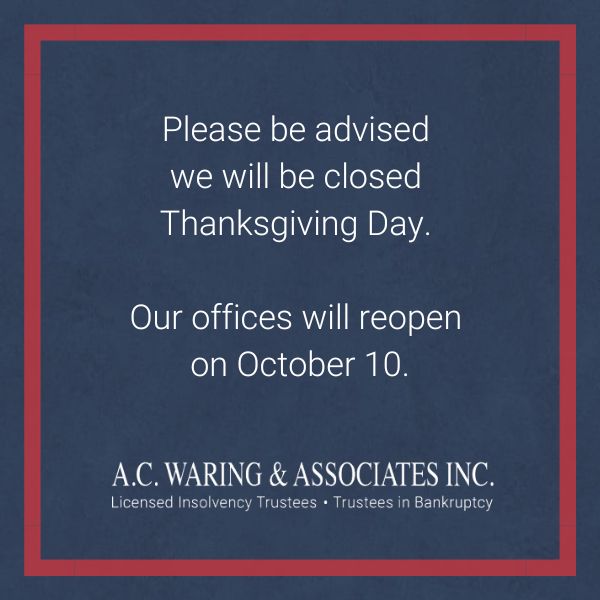Car loans and other secured debts are handled differently from conventional debts during the bankruptcy process. We’re here to help you understand how unsecured debts will be affected by filing for bankruptcy and whether or not you will be able to keep your vehicle.
Bankruptcy Exemptions
Every province has different amounts they allow for each bankruptcy exemption category.
In Alberta, these are:
- One motor vehicle up to $5,000
- Food for the next 12 months (including dependents)
- Necessary clothing up to $4,000 (including dependents)
- Household furnishings and appliances up to $4,000
- Home equity in your principal residence, including a mobile home, up to $40,000 is reduced to your percentage of ownership if you are a co-owner)
- For farmers, up to 160 acres of farmland and necessary equipment
- Personal property required to earn a living (books, tools, equipment) up to $10,000
- No limit on medical and dental aids
Alberta’s Exemptions for Cars
All provinces have exemptions for cars, including Alberta. There is an understanding that you need your car to get to work and you need to work to pay off your debt, so cars are exempted to a certain degree under bankruptcy law.
Alberta exempts one car or truck worth up to $5,000.
Can You Keep Your Car?
Yes, you can keep your car if it’s worth less than $5,000 and you own the vehicle outright. If you are paying off a car loan, your vehicle is considered a secured debt. For secured debts, the $5,000 exemption applies to the equity you have in the vehicle, not the vehicle’s actual value. For example, imagine your car is worth $10,000 and you have $6,000 remaining on your loan. The equity you have in the vehicle is $4,000 making it within the $5,000 exemption for bankruptcy.
Understanding How Secured Debts Are Handled During Bankruptcy
A secured debt is a debt secured by a loan or mortgage, such as the mortgage on your house or a car loan. Secured debts are not discharged by bankruptcy, but whether or not you can keep the asset depends on the amount of equity in the asset, whether your payments are up to date, and whether you can continue to make mortgage, insurance, property tax payments and applicable condo fees.
If you are behind on your loan payments, the mortgagor can foreclose on the asset regardless of bankruptcy filings.
Assets with zero equity are exempt from your bankruptcy proceedings and you can keep them, provided you are keeping up with the payments.
Any amount of positive equity is what is taken into consideration during bankruptcy. Equity is the value of the asset minus the amount you still owe on your loan. The positive equity of the asset is the amount that must be within bankruptcy exemptions outlined by each province. Any excess equity beyond the exemption amount will be included in your bankruptcy estate.
You may also decide that you do not want to keep the asset during the bankruptcy process, particularly if you have negative equity. Negative equity means that the asset is worth less than the total amount you have remaining to pay on the loan. If you’re in this situation or if you don’t want to keep the asset, you can simply default on the payments and surrender the asset to its creditor. The debt then becomes an unsecured debt and it will be discharged during bankruptcy.
Our Licensed Insolvency Trustees are debt solutions people and they’re here to help. Call us at 780-424-9944. We can help you begin to navigate your debt relief options inclusive of bankruptcy proceedings or other alternative solutions.




